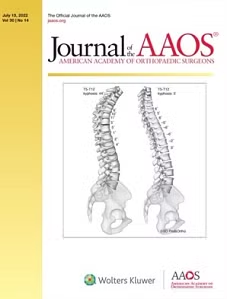
There’s so much information being constantly relayed through your body’s nervous system that intense pain can result from nerve signals going astray in this complex system, making you question whether you need outpatient spine surgery.
Signals travel from your brain to your nerves through the spinal cord. Along the entire length of your spinal cord, nerves enter and exit.
As we explore lessons in nerve pain, remember to take a look at the different sections making up your spinal column — including the cervical spine (diaphragm, shoulders, arms, esophagus, and part of the chest), thoracic spine (parts of the esophagus and arm, trachea, heart, lungs, liver, gallbladder, and small intestine), lumbar spine (legs and feet), and sacrum (bowels, bladders, sexual organs).
How Nerves Transmit Pain and Outpatient Spine Surgery
There’s a lot of pressure on nerves when spinal structures and nerves are close together. Back pain can be caused by irritated nerves in the spine, such as those going to the legs and arms, as well as nerves that empower the spine.
A lumbar herniated disc is a common cause of nerve pain. Nerve roots can be pressed against by herniated discs between vertebrae. There’s also a chance of a nerve being aggravated if a gel-like material leaks inside the disc.
Neuropathy — which is damage to your nerves outside the brain and spinal cord — can develop after nerves are damaged, with abnormal signals sent from both the peripheral and central nervous systems. In this case, outpatient spine surgery is one of a few options to seriously consider.
Peripheral Nervous Network and Outpatient Spine Surgery
Through openings between the vertebrae, 31 spinal nerve pairs exit the spinal cord. A nerve root is where a nerve exits the spinal cord, and different parts of the body are controlled by your nerve roots.
Basically, neuropathic pain is caused by damage to the nervous system. The exiting lower back nerve has peripheral branches that go all the way to your toes. Peripheral nerves comprise the peripheral nervous system and include both motor nerves and sensory nerves.
A sensory nerve is a nerve that receives sensory stimuli, telling you how something feels. Sensory nerve fibers make up these nerves, where mechanoreceptors sense body movement and pressure against the body and nociceptor fibers sense tissue damage.
With respect to your motor nerves, muscles are stimulated by them. They’re made of what doctors call motor fibers.
Moreover, there’s an inner and outer part to nerve cells that can get damaged by neuropathy. In a nerve cell, the axon is the information path — also known as the cable transmission of neurons. A layer of insulation protects the nerve cells and helps transmit this information.
People with peripheral neuropathy usually start getting symptoms in their feet first, and then their hands. It usually moves up the arms and legs over time. This could be evidence of a larger problem, and outpatient spine surgery should not be ruled out. Take as much time to research your options.
Changes in joint morphology and other things aren’t the only phenomenon that happens during this period. Developments actually take place within how information gets sent into the spinal cord, and then out to higher areas. Unfortunately, sensory fibers that are normally activated only after a severe injury are activated at this critical juncture.
Think About This: It’s All in Your Head
The brain reacts to pain signals in a variety of ways. By producing endorphins, which are morphine-like substances found naturally in the human body, certain parts of the brain stem can inhibit or muffle incoming pain signals.
It’s possible to release endorphins when you’re stressed, excited, or exercising hard. As a result of endorphins, those who play a lot of sports or are very active don’t feel the pain of a fairly serious injury until after the big game. And believe it or not, regular low-impact aerobic exercise can also help control chronic back pain. Your exercise and health are always two things you should consider while you’re studying more details regarding outpatient spine surgery.
The brain sends pain messages along a variety of pathways. Your spinal cord sends fast pain messages to parts of the brain, like the thalamus and cortex. Higher thinking happens in the cortex. When pain hits the cortex fast, it prompts immediate action to reduce your pain.
However, when it comes to chronic pain, it moves slowly. In general, slow pain feels like a dull, aching, burning or cramping sensation. Through the spinal cord, slow pain signals travel along the same pathways as fast pain signals. After reaching the brain, slow pain messages take a path to the hypothalamus and limbic system (the part of your brain involving behavioral and emotional responses). Stress hormones are released by the hypothalamus, but emotions are processed by the limbic system. Stress, depression, and anxiety are often associated with chronic back pain. Pain signals pass through brain areas that control emotions and experiences.
As well as controlling pain messages, the brain makes sense of the context in which these messages are experienced. The cortex does this. Experts have noticed that combat military veterans who are wounded may show less pain than civilians who are injured in accidents. That’s because there’s a big difference in the meaning and tolerance attached to the painful situation at hand (or from the past), all depending on the individual’s circumstance.
Your Spine’s Alarm Function for the Brain
Remember: you need to understand your spine’s pain-alarm function as you consider outpatient spine surgery. A full, comprehensive understanding of how everything works is the first step.
With that said, until they reach the spinal cord, pain messages travel along the peripheral nervous system. According to gate-control theory, there are so-called “gates” between peripheral nerves and the brain on the nerve fibers in the spinal cord. From peripheral nerves to the brain, these gates control pain messages.
Spinal nerve gates handle pain signals based on a lot of circumstances. Among them are the intensity of the pain message, competition from other nerve messages (such as touch, vibration or heat), and signals from the brain telling the spinal cord how important the pain signal is.
Signals can be processed in a variety of ways depending on how the gate processes them. Some are halted from reaching the brain. Others are modified before getting sent to the brain. And still, others might be granted access to pass directly to the brain.
What experts call the “phantom limb” phenomenon — where amputee patients experience sensations in a limb that doesn’t exist — illustrates the complexity of this process. This can be explained by the gate control theory, which shows how the nervous system’s structures interact and how the most complex structure plays a role.
Outpatient Spine Surgery
Awake Spinal Fusion is here to educate you on the basics of your spine, back pain, “awake” spinal and neck surgery, minimally invasive surgery options, and so much more about outpatient spine surgery.






